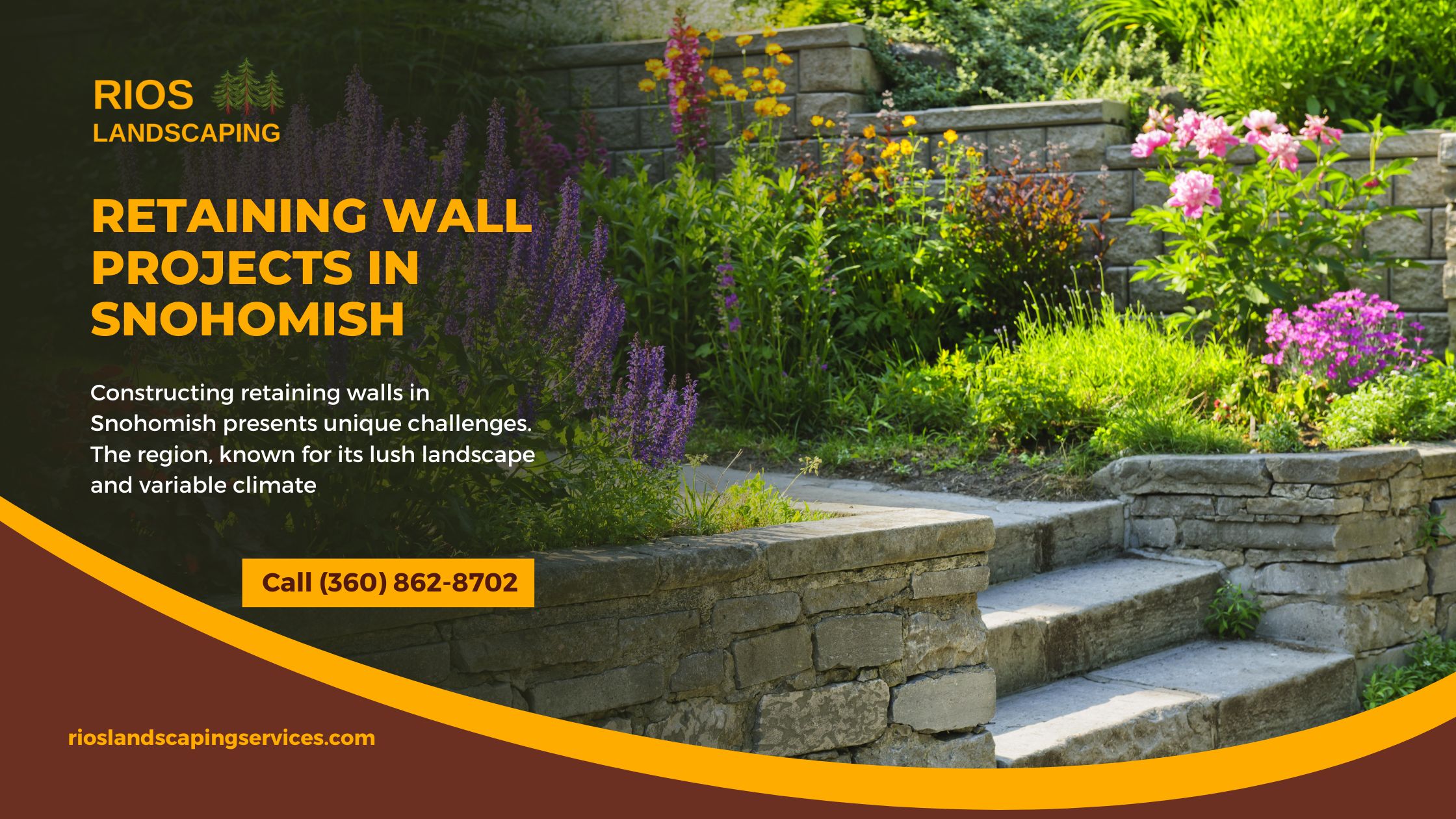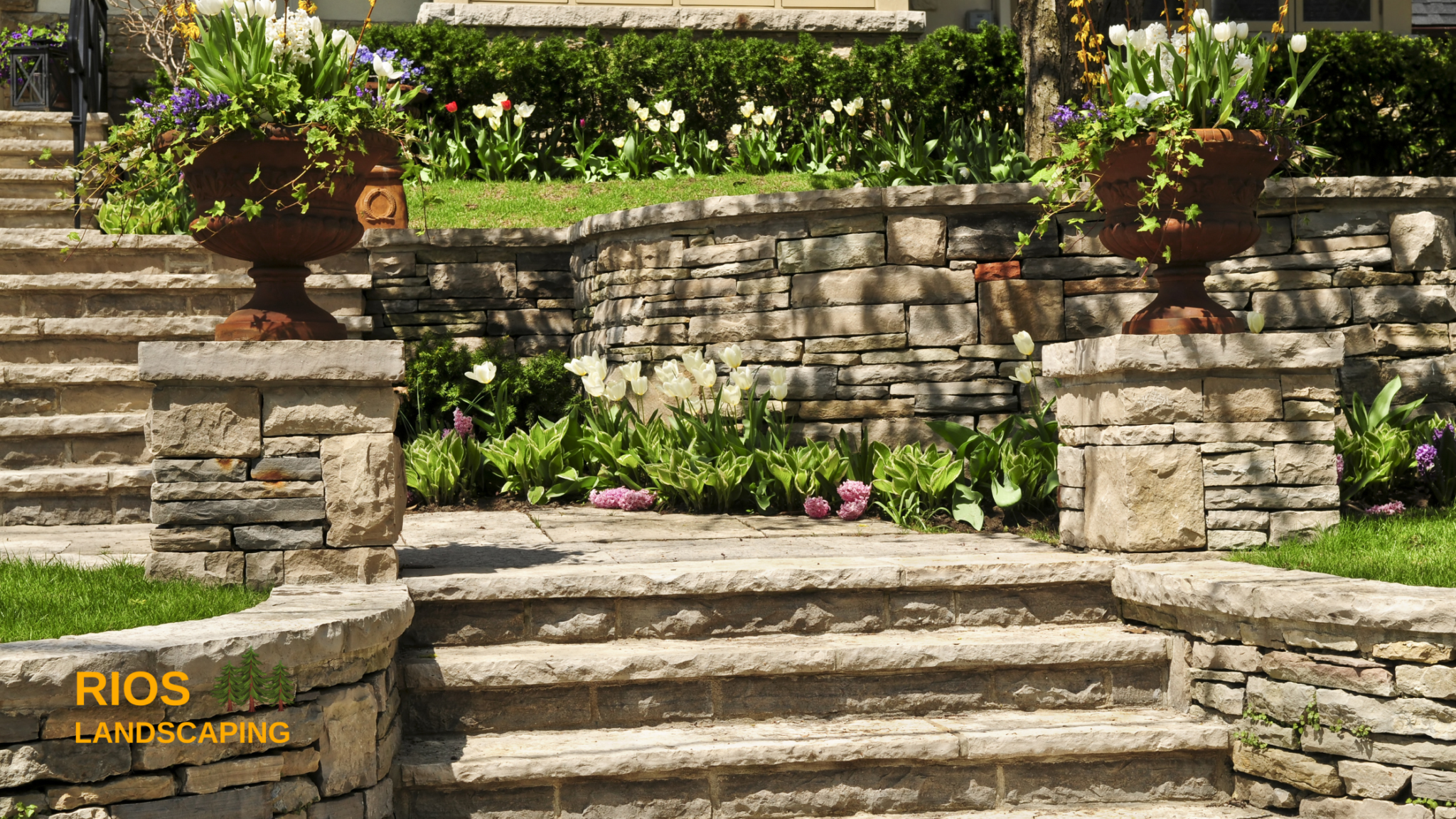
Retaining Wall Challenges in Snohomish
Constructing retaining walls in Snohomish presents unique challenges. The region, known for its lush landscape and variable climate, requires careful consideration of several factors:
- Soil Conditions: Site-specific assessments are essential to ensure wall stability, varying from clay to loamy soil.
- Precipitation Patterns: High rainfall totals demand effective drainage solutions to prevent water pressure build-up behind walls.
- Topographical Variations: The hilly terrain necessitates tailored designs that cater to steep slopes and potential erosion.
- Material Selection: Choices must be resilient to weathering and compatible with the natural aesthetics of the Snohomish area.
Understanding the Soil Conditions in Snohomish for Retaining Walls
Recognizing local soil conditions is crucial for stability and durability when designing retaining walls in Snohomish. The region’s soil is predominantly a mixture of silt loam and sandy loam, known for adequate drainage but varying in compaction and cohesion. Key considerations include:
- Drainage properties: Assessing the soil’s permeability to manage water flow and prevent hydrostatic pressure behind the wall.
- Soil strength: Understanding the soil’s load-bearing capacity to ensure the retaining wall can support anticipated forces.
- Frost heave potential: Considering the depth of the frost line to protect the wall from shifting during freeze-thaw cycles.
- Erosion risk: Identifying erosion-prone areas may require additional reinforcement or specific design features.
Selecting the Right Materials for Durability and Aesthetics
Choosing materials for retaining walls in Snohomish demands attention to both durability and aesthetics. Durable materials like concrete, natural stone, and pressure-treated timber can withstand the rainy climate. Concrete provides structural strength and resistance to moisture, while natural stone offers a timeless appeal that blends with the natural landscape. Timber adds a rustic touch; however, it should be treated to resist decay. Additionally, interlocking blocks simplify installation with their self-aligning design, ensuring a stable and visually pleasing structure that endures.
Innovative Drainage Solutions for Snohomish Retaining Walls
Retaining walls in Snohomish face unique challenges due to rainfall patterns. Engineering firms have responded with innovative drainage solutions to address these issues. For example:
- Perforated Drains: Pipes with perforations are installed behind the wall, collecting excess water and diverting it away, which mitigates hydrostatic pressure.
- Drainage Swales: These shallow, vegetated channels direct stormwater runoff, reducing the burden on the wall structure.
- Hydrodynamic Separators: Utilized in urban settings, they remove sediments and oils from stormwater before it reaches the wall, ensuring long-term stability.
- Bioretention Cells: These landscaped areas are designed to filter and absorb runoff, combining aesthetic landscaping with efficient drainage.

Cost-effective Construction Techniques for Snohomish Homeowners
When building retaining walls, Snohomish homeowners can leverage several cost-effective construction techniques to maximize their investment while ensuring quality and stability:
- Modular Blocks: Using interlocking blocks simplifies construction, reduces labor costs, and provides design flexibility without compromising strength.
- Timber Walls: Timber is a more economical option for shorter retaining walls and can add a natural aesthetic to landscaping.
- Riprap Stone: Stone can act as a durable and natural-looking retaining solution, excellent for managing erosion at a lower cost than formed concrete walls.
- Recycled Materials: Incorporating repurposed concrete, bricks, or stones can cut expenses significantly and support sustainability goals.
- Geogrid Reinforcements: Applying geogrids behind retaining walls enhances structural integrity while minimizing the need for more expensive, heavy-duty construction materials.
Homeowners can achieve durable and cost-efficient retaining wall solutions by selecting appropriate materials and techniques.
Professional Installation vs. DIY: Evaluating Your Options
When considering a retaining wall project in Snohomish, evaluating the choice between professional installation and DIY is pivotal. Professional services offer expertise, guaranteeing wall stability and compliance with local regulations. They bring advanced tools and materials, ensuring a lasting structure with minimal maintenance. Conversely, DIY can significantly reduce costs and offer personal satisfaction. Homeowners must weigh:
- The complexity of the project
- Personal skill level
- Time availability
- Long-term reliability concerns
- Potential cost savings
Ultimately, the decision hinges on balancing the need for a professional finish against the desire for hands-on involvement and potential budget constraints.
Landscaping Considerations Post-Wall Construction
After successfully installing a retaining wall, particularly in Snohomish’s unique climate and geography, landscaping serves both aesthetic and functional purposes. Considerations include
- Drainage Solutions: Ensure the integration of proper drainage mechanisms to avoid water buildup that could pressure the wall.
- Soil Type and Quality: Select soil that supports plant growth and complements the wall’s structural integrity.
- Vegetation Selection: Opt for native plants well-adapted to Snohomish’s local environment, as they tend to require less maintenance and provide natural reinforcement for the retaining wall.
- Irrigation Systems: Install efficient irrigation to maintain landscape health without compromising the wall’s stability.
- Aesthetic Coherence: Create a visually appealing landscape that complements the wall and surrounding features for a cohesive outdoor space.
Maintaining Your Retaining Wall: Tips and Best Practices
Regular inspection of retaining walls, especially after extreme weather, is crucial to detect early signs of damage. Homeowners should also ensure proper drainage to prevent water build-up that can exert additional pressure on the wall. Vegetation growth should be controlled, as roots can cause structural problems. Additionally, cleaning the wall surfaces of moss and debris will maintain their appearance and integrity. For any significant concerns, consulting with a professional is advised to address potential structural issues promptly. Proper maintenance ensures your retaining wall remains functional and aesthetically pleasing for years.
If you’re in Snohomish and considering a retaining wall project to enhance your outdoor space, don’t hesitate. Reach out to Rios Landscaping today. Their skilled team is ready to offer:
- Expert advice on design and material choices
- Detailed project plans tailored to your specific needs
- Professional installation services ensuring longevity and stability
Secure your property and beautify your landscape. Contact Rios Landscaping at (360) 862-8702 to schedule a consultation. Transform your space with confidence and quality craftsmanship.
